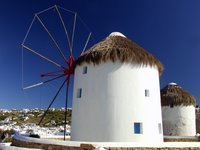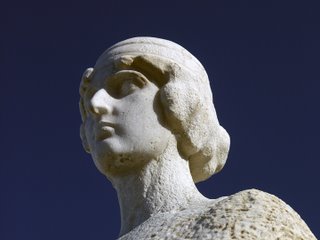
Mykonos, lying between Tinos and Naxos and close to the mysterious Delos, is my favorite of the Greek islands probably because the famous windmills are so compelling. In ancient Greek mythology the earliest reference to Mykonos tells that the island took its name from the hero Mykonos. Another story is an explanation for the large rocks which lie scattered all over the island. Hercules slew the Giants there, and the rocks are their corpses turned to stone.



Mykonos, one of the islands of the Cyclades, has been populated with Ionians who came from Athens since the 9th century B.C. Then Delos was a major religious center and the most important of the islands, but now Mykonos is definitely the one that dominates. The island was conquered by Venetians early in the 13th century. The Turks took it in the middle of the 16th century. The Turks couldn’t hold onto the island and finally gave up trying after the Mykonian heroic woman leader, Manto Mavroyenous, successfully repulsed their attempt to retake it.




The pelican is a a well-known mascot for Mykonos. He hangs around the harbor begging fish from the commercial fishermen.
Anywhere you stand on the island, you are surrounded by a deep, blue sea. A picture-perfect fishing harbor and village nestle against a broad curve beneath a hill covered by all-white buildings with colorful doors and windows. Domes and crosses of many small churches rise slightly above the other buildings. A row of round, gleaming white windmills line the hill above an area known as Little Venice.



No comments:
Post a Comment